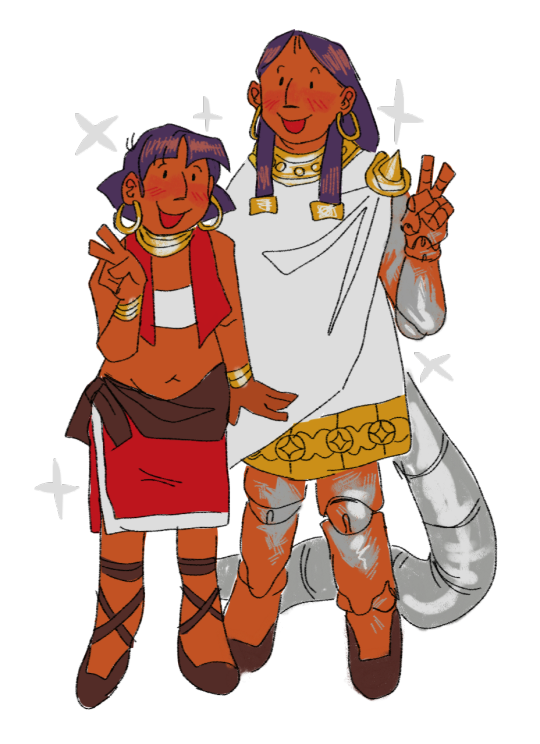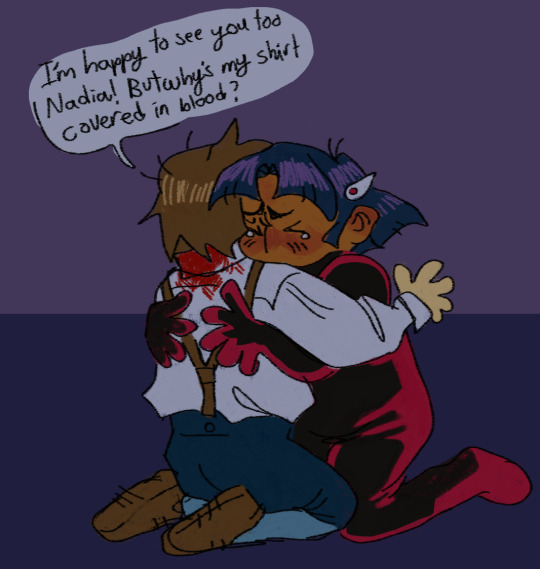#nadia: the secret of blue water
Text
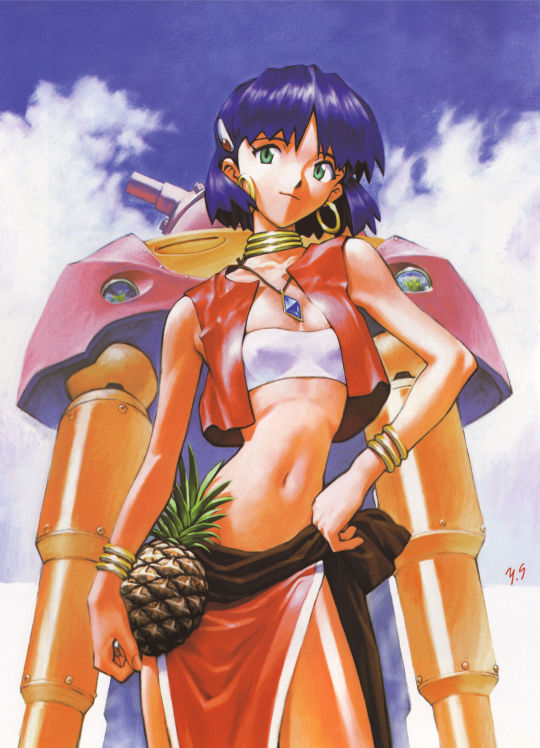
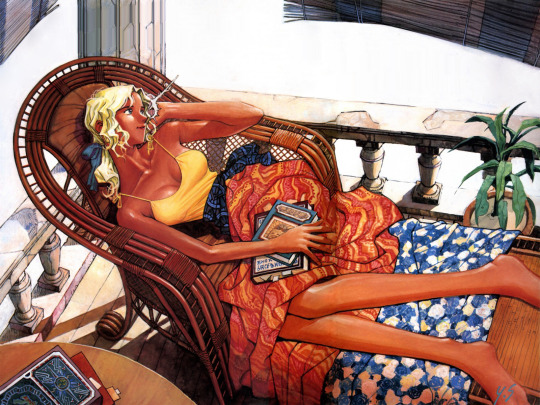
Yoshiyuki Sadamoto, Nadia: The Secret of Blue Water
#Yoshiyuki Sadamoto#Nadia: The Secret of Blue Water#anime illustration#it's almost summer#and this perfectly captures that feeling#traditional art#Nadia#anime#from the art book#Alpha Yoshiyuki Sadamoto Illustrated Collection#art
210 notes
·
View notes
Text
Ultimate Anime Tournament: Round 1, Matchup 81

139 notes
·
View notes
Text

35 notes
·
View notes
Text
The Year is 1889...
Hey, who ordered all of this Nadia fanart? Because lord have mercy, I'm in a hyperfixiation again. This was fun though, I really like how I'm rendering anime characters in my own very rubberhose inspired artstyle. I apologize to all of the people that followed me for my EarthBound fanart, but you're gonna get some Nadia art for a little bit.

#artists on tumblr#nadia: the secret of blue water#anime fanart#fushigi no umi no nadia#gainax fanart#gainax#the goobers#my blorbos even#also there's an earthbound reference here
14 notes
·
View notes
Text
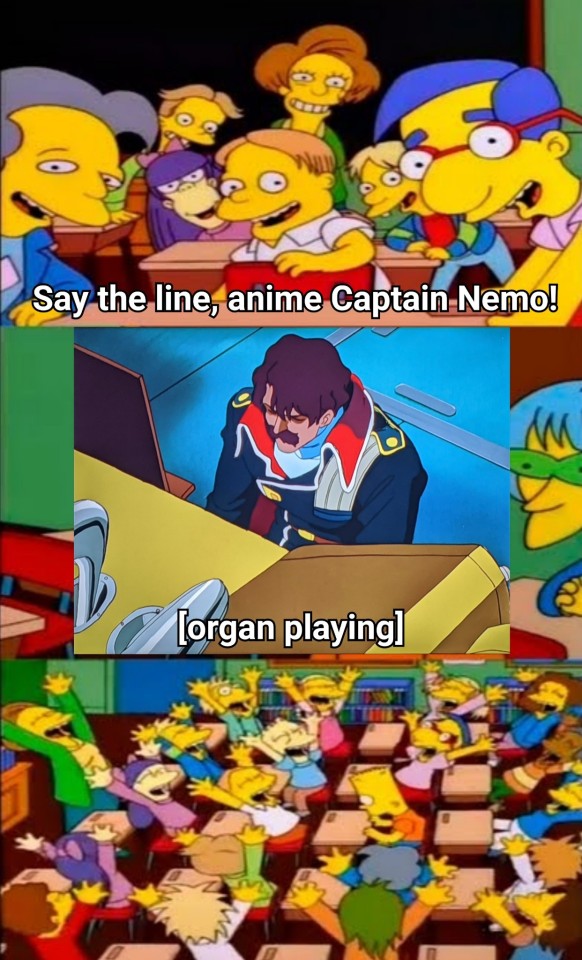
greatly enjoying Nadia: The Secret of Blue Water so far
#nadia: the secret of blue water#captain nemo#20000 leagues under the sea#the nautilus design here is fascinating so far. the exterior is vaguely h.arper goff-esque bc everyone admits the disney film popped off#but the interior is very sleek and colorful and looks like it was plucked directly from f.uture boy conan#especially wrt color palette#which tracks for many reasons#loving the characters in this too! team rocket i mean grandis and her boytoys delight me to no end#and nadia herself is great#jean is one of those character types that can really rub me the wrong way if done...well. wrong but so far he's been great and i like him#very excited to see more of nemo & the nautilus crew; wondering how much they will change nemo's backstory in this to fit w/the big bads#my edits
45 notes
·
View notes
Text
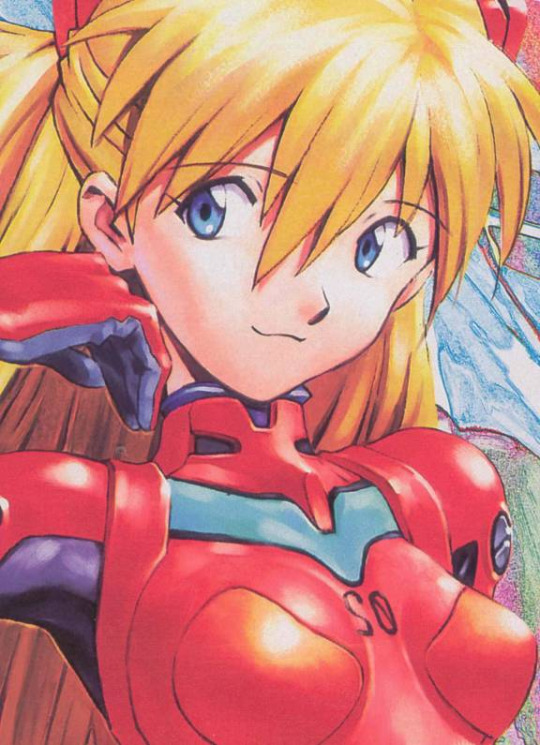

#Neon Genesis Evangelion#Asuka Langley Soryu#Nadia: The Secret of Blue Water#Nadia La Arwall#tumblr polls#poll
14 notes
·
View notes
Photo
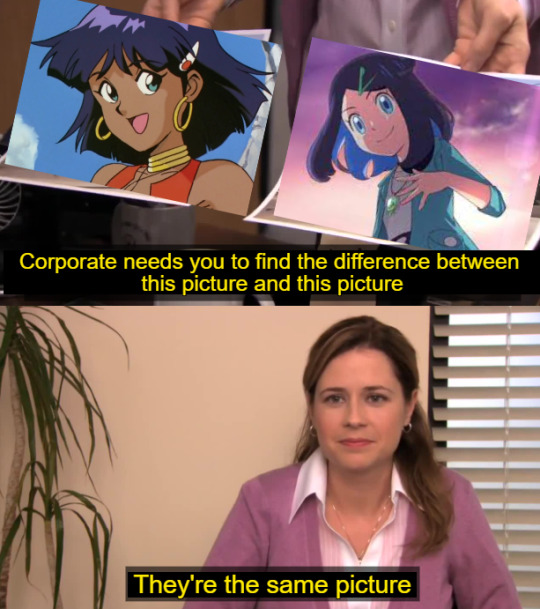
OK, not exactly the same, but still - a girl has a mysterious pendant, gets pursued by a group of bad guys over it, befriends a boy and together they join a captain and his crew aboard a large vessel they can travel the world in....the set-up is identical, I couldn’t not compare them!
#Pokemon#Reboot#Pokemon Horizons#Nadia: The Secret of Blue Water#Liko#Nadia#Meme#Comparison#Funny#I love this bitch#I love this one too
22 notes
·
View notes
Text
Damn, I'm just realizing how many of my favorite pieces of media have boys that wear unique hats. I think I'm noticing a trend here, hmmm... /very silly, for me, I blame Team Fortress 2.

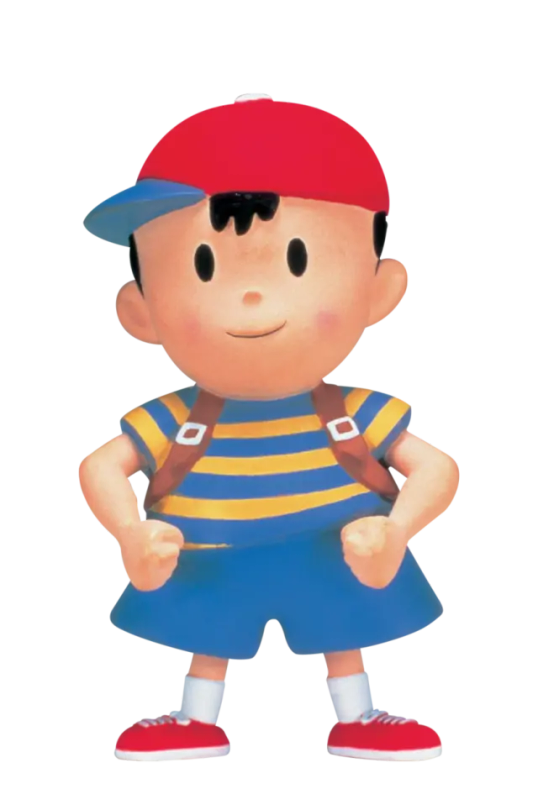


#bimble musing#earthbound#nadia: the secret of blue water#Pokemon#team fortress 2#this is something only a mind like myself could come up with btw#And almost all of these are from Japanese media too#damn I love hats
4 notes
·
View notes
Text
Israels 'Gargoyle Logic'
As a kid, I was fond of the anime show 'Nadia & the Legend of Blue Water' - what appealed to me about it was that despite some humorous whimsicalness, it was absolutely No Bullshit about serious themes. For example I was impressed by a scene where, when a little girl's parents die, they don't give her some Bs about how "they will always be with her" but outright tell her that she'll never see them again.
One areas where it was extremly Real is the depiction of war & fascism. The villain, known only as Gargoyle, was an obvious fascist analogy likely inspired by Imperial Japan, and he was absolutely brutal & uncompromising with no shred of cartoonish silliness.
One of the notable things about him is that he would do that he would resort to gratuitous violence to make the protagonist comply with his demands.
She would defy him, and then he would just shoot a random person and claim that "it is you who killed this man" by resisting.
Now, many years later, I notice that this was a very insightful depiction of fascist violence.
I'm seeing the same twisted logic play out with regards to the massacres in Gaza, in the way the deaths get blamed on the resistance and the fact that Palestinians (or rather, a small group of them that most civilians had little to do with) dared to resist being conquerred & subjugated.
"Oh its Hamas who killed these people, they should have known..." what, that Israelis would be completely inhuman? Bomb their own people, rile up the mob with atrocity propaganda & kill indescriminately?
What's the alternative? Peaceful & economic protest was shut down with lethal force. Should they just lie down & take it?
Heck, even if we accept the notion of Hamas as "baddies", broadly speaking, - they could have sent in a swat team to get them. They could have backed their political rivals. They could have pressured Qatar to extradite their bosses with the help of the USA.
Absolutely NO ONE forced the Zionist Regime to resort to mass murder. They chose that. Self-defense only goes as far as repelling them past their borders. (that is, if we're generous, considering the occupation... )
Now in the story, Gargoyle ended up realizing that he couldn't compell Nadia to do his biding no matter what. Her stubbornness which, in other contexts was often a character flaw, ensured that she would never cooperate with someone she saw as a megalomaniac murderer, even when he killed her boyfriend in front of her. (indeed this exploded his plan cause she sacrificed the magical artifact he was after to save him)
And there is truth in this, too: Human will is not actually so weak that it can't ever resist tyranny & torture - for some, the will to resist tyrants actually HARDENS with every wanton act that they do.
its time Netanyahu & Biden find that out, too....
5 notes
·
View notes
Text

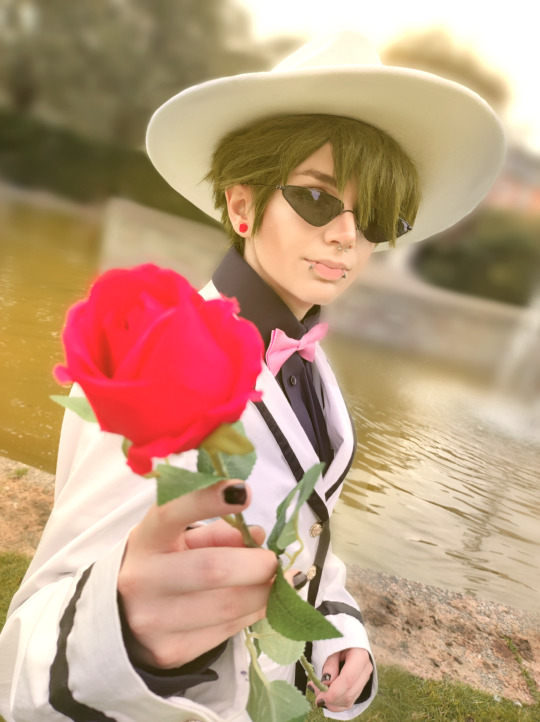
Photo: @Bertysbrotbox (insta)
Editing: me
Anime: Nadia: The secret of blue water
Character: Sanson
_________________
It was so much fun finally wearing my Cosplay of Sanson to Connichi last weekend! I wanted to show the photos my friend took of me!
#cosplayer#cosplay#connichi#connichi 2023#nadia secret of blue water#nadia: the secret of blue water#studio gainax#gainax#hideako anno#90s anime#retro anime#nadia the secret of blue water#Grandis gang#evangelion#tagging eva because otherwise bobody finds it plus anno made this show :////#anime cosplay
6 notes
·
View notes
Text


The character of Jean Roque Raltique from Nadia: The Secret of Blue Water is said to have inspired Milo Thatch from Atlantis: The Lost Empire, but unlike Milo, Jean is fourteen years and has an interest in aviation, which, in addition to his physical appearance and the way he dresses, makes him more similar to Hayao Miyazaki's interpretation of Tombo from Kiki's Delivery Service (flying and aviation is a common occurrence in Miyazaki's works).
One notable scene from Nadia does mirror Kiki’s Delivery Service: the characters flying on a plane…or a bike.
3 notes
·
View notes
Text
Short Reflection: Nadia: The Secret of Blue Water
I have not watched much old anime. It’s an oversight I know I need to correct; there’s plenty of great stuff to be found in anime’s long history, and I’d be doing myself a disservice if my only experience with this medium’s past came in the form of Miyazaki movies (as fantastic as those movies may be). But I tend to drag my heels on it because, well, me and old anime don’t always get along. As many excellent shows and movies as I’ve seen in the years before the new millennium, a lot of stuff from back then has just not aged well. At least not for me. Maybe it’s a disconnect with the visual and thematic aesthetics of the time compared to how modern anime looks and feels. Maybe it’s the difference of growing up in a post-Evangelion world and finding it hard to return to anime that were made before that franchise’s overwhelming influence. Or maybe some of this stuff just straight-up sucked and we were too young or inexperienced with the medium to realize. I want to like old anime, and I’m sure there’s plenty of stuff I’ll love that I just haven’t found yet, but a lot of the time, engaging with anime’s history means running into barriers that I’m not always able to overcome. And sadly, that’s exactly what happened with Nadia: The Secret of Blue Water.
If nothing else, the circumstances of Nadia’s creation are fascinating enough to engage with on their own. Originally a pitch from Hayao Miyazaki himself, it was eventually picked up to be directed by Hideaki Anno, a man who’s creative sensibilities couldn’t be farther from Miyazaki’s if he tried. The show’s tumultuous production was so destructive to Anno’s mental health that he stayed away from directing another project for years. And when he finally returned to the director’s chair, he channeled those mental health struggles into his new project, resulting in the absolute game-changer that was Neon Genesis Evangelion. So in a weird way, Nadia and its creation is responsible for the shape of the modern anime landscape. Anime as we know it wouldn’t exist without Evangelion, and Evangelion wouldn’t exist without the executives at Gainax forcing Nadia’s creators to shoehorn in an entirely new story arc mid-production because the ratings were so good. So, uh, I guess the legendarily terrible Island Arc wasn’t a total waste after all? I dunno, silver linings and all that.
But I’m getting ahead of myself. The premise is, fittingly enough, classic Miyazaki, by which I mean it’s basically just Castle in the Sky again. You’ve got a mysterious girl with a magical pendant who teams up with an ordinary boy to find a lost civilization the pendant is important to, that civilization is a metaphor for the sin of hubris and the need for humans to live in harmony with nature instead of trying to subdue it, the bad guys are a fascist-coded cult seeking to monopolize the old civilization’s power for themselves and rule the world, and there’s a secondary bad guy team of bumbling Team Rocket-esque criminals who eventually end of on the side of the good guys (The Grandis Gang is the best part of this show and I appreciated every moment they were on screen). There are some differences, of course- the setting is the late 19th century instead of a post-apocalyptic pastoral paradise, the ancient civilization is buried under the waves instead of hidden above the clouds- but the broad strokes are basically identical. But hey, Miyazaki’s never been shy about recycling ideas before, and if the execution of these ideas here had been as great as Laputa, that’s what really matters.
Except, of course, this isn’t a Miyazaki show. It’s a Hideaki Anno show. And the clash between the very Miyazaki premise and the very Anno execution of that premise is easily the biggest reason to watch Nadia. It’s fascinating watching this all-ages fantasy adventure take sudden turns into death and darkness. It’s fascinating watching Miyazaki’s trademark whimsy and lush portrait of reality filtered through Anno’s fascination with jagged edges and even more jagged characters. Violence is intense and shocking. Body horror, though rare, is genuinely gruesome. The depictions of ancient cultures are steeped in cryptidian menace and existential mystique. Nadia herself is a far more jaded protagonist than Miyazaki’s ever written, a girl who pushes the world away out of fear it’ll just hurt her to engage with other people again. There’s even a lot of the experimental direction that would come to define Evangelion’s final stretch of accidental art-house brilliance. It never stops being a whimsical adventure first and foremost, but Nadia: The Secret of Blue Water is far more willing to engage with the darker, edgier side of its adventure than Castle in the Sky ever did. If you enjoy tracking the careers and styles of specific artists, this show will be like catnip to you.
Unfortunately, I can’t just enjoy Nadia on the basis of its eclectic blend of storytelling sensibilities. I have to judge it as a show. And even putting aside the infamous Island Arc (Don’t worry, we’ll get to that mess in a moment), this is a deeply flawed product of its time. And sadly, Nadia herself is one of its biggest issues. Or rather, the issue is in how she’s treated. Despite her name being in the title, Nadia barely gets to do anything besides mope, get captured, get rescued, and be ferried along by plot forces that tell her she’s The Most Important Thing(tm) ever. It’s the same problem last year’s Fena: Pirate Princess had, where the protagonist is supposedly the most special amazing important person ever, but it all manifests as the plot pushing her around rather than her getting to take charge of her own story. Now, Nadia’s emotional growth as a person is central to the show, so it’s not like it completely ignores her. Her journey of learning to accept other people and let go of her past feeds directly into the show’s thesis on humanity, and how we all need to support each other as one people instead of isolating ourselves through arrogance or fear. But it would still be nice if she actually got to do something on that journey instead of the plot mostly unfolding without her influence.
And sadly, that’s far from the only way this show lets its female characters down. There’s the expected fanservice, of course, all of it very groan-worthy whether it’s “accidental” pervert moments or the men just straight up leering at the girls around them. But what’s even worse is... okay, look, remember back in Gunbuster how that one girl fell in love with her much older coach out of nowhere? Remember how gross and completely nonsensical it was? Yeah, I’m starting to think Anno had a bit of an Electra complex in his early days as a creator. Quite literally in this case, because Electra is literally the name of one of the characters in this show, and her big emotional breakdown comes from being in love the man who basically raised her as an adoptive father, only to succumb to jealousy when she thought his biological daughter was stealing his attention. No, I am not making this up. This is literally in-universe how Electra describes her feelings. And then they eventually have a kid together! Yes, really! And believe it or not, that’s not even the only time this show pulls an Usagi Drop on you! Christ almighty, at least when Evangelion went full Freudian psychosexual drama with Misato and Ritsuko, it was fucked up on purpose.
As for the Island Arc... yeah, it’s exactly as horrendous as you’ve heard. It’s a pointless diversion that only exists to kill time because the studio ordered more episodes, all the characters are Flanderized to their most annoying selves, the story’s tone takes a bizarre diversion into Looney Tunes territory, the animation takes a serious nosedive because there wasn’t enough time to make the episodes on such short notice (on the bright side, the majority of Nadia does still hold up and look great), and it basically butchers everything this show had going for it. For all my issues with The Secret of Blue Water, I can at least respect its sense of adventure and commitment to its complex themes. But the Island Arc isn’t just bad on its own, it feels like a deliberate insult to the show it’s supposedly a part of. In particular, it shits all over Nadia with some of the worst character assassination I think I’ve ever seen, and it turns her romance with co-protagonist inventor boy Jean into an absolutely agonizing slog of pointless conflict and convenient progress-backtracking that makes Zero no Tsukaima look like Kaguya-sama. Whoever was responsible for how this arc turned out, it feels like they just hated Nadia, and they used their time in charge as an excuse to play out their weird misogynistic fantasies of putting her in her place. It’s honestly more degrading than any of the fanservice moments.
And since there’s actually some big important plot developments in the middle of the Island Arc, you can’t just skip it like your average Naruto or Bleach filler arc. You either have to track down a fan edit of this arc that cuts out all but the most important bits, suffer through it in its entirety, or just skip all but the most relevant episodes and be content missing the connective tissue that would otherwise tell you how certain characters got to where they are. It’s a no-win scenario no matter how you slice it. I could honestly spend an entirely separate review just breaking down all the ways the Island Arc sucks, that’s how bad it gets. But at that point I wouldn’t really be reviewing Nadia: The Secret of Blue Water anymore. If there’s one consolation, it’s that outside that handful of important plot beats, everything in this arc matters so little that its terribleness doesn’t impact the rest of the show. You might as well be watching an entirely different show with entirely different priorities, and when things finally get back on track for the final five episodes, you can slip right back into Nadia Proper as if nothing ever happened, the characters still untainted by whatever madness took hold of them for the past twelve episodes. Not that it really dulls the pain of having to sit through them in the first place, but still. Again: silver linings.
I realize I’ve been negative for a lot of this review, and I wish that weren’t the case. Because there were things I really liked about Nadia! I liked the overall animation and art design! I liked its willingness to engage with death as a thematic concept and give it some real gravitas! I liked the Grandis Gang’s antics! I liked how weird and out-there it was willing to get with its pulp sci-fi! I even really liked the English dub! Yeah, it took some getting used to, and Jean’s voice actor really shouldn’t have been forced to do that terrible French accent, but it’s got so much charm! It’s not hard to see why this show became a classic; even despite its obvious inspirations, it’s got so much originality, so much passion. It’s the kind of singular work that you just know nothing else will ever quite duplicate again, and I respect it for that. But time has not been kind to Nadia. Watching this show over three decades later, its warts have only grown more cancerous, its flaws more unavoidable, its missteps less forgivable. There’s plenty of good to be found in here, but on the whole, too much of Nadia: The Secret of Blue Water feels like it’s better off being left in the past. And in the end, I’m forced to give it a score of:
4.5/10
God, I’m really sad about this. I wanted to like Nadia so much, but I just couldn’t get past some of those issues. Hopefully whichever show you choose for me to watch next will be a little more up my alley!
#anime#the anime binge-watcher#tabw#nadia: the secret of blue water#fushigi no umi no nadia#nadia the secret of blue water#pre 2000 aniwatch
13 notes
·
View notes
Text
The Awe of the Nautilus
Hey now, this is something different! Here's a screenshot redraw of a scene from Nadia: The Secret of Blue Water, one of my favorite animes! I got inspired after seeing that one of my mutuals, @ascendandt, redrew this exact screenshot and I was like: "I wanna take a crack at it." And now, here we are! Behold, anime characters in a rubberhose cartoon artstyle! Original screenshot under the cut

Original screenshot:
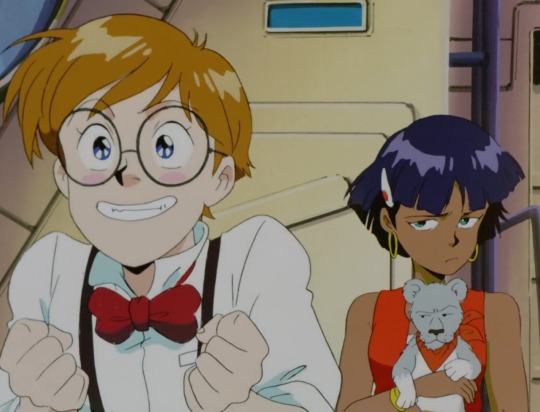
#artists on tumblr#nadia: the secret of blue water#anime fanart#screenshot redraw#Jean and Nadia are so dear to me#you have no idea#did you know evangelion was originally going to be a sequel to Nadia?#now you know#i wish nadia kept her pinafore dress so bad
12 notes
·
View notes
Text
Las 20 Chicas, piel canela mas bellas del anime
Las morenas de piel canela, mas bellas del anime, oliva o de ‘tipo invierno oscuro’, se caracteriza por los tonos mates de una piel que en el verano se broncea rápido y que siempre armoniza con los matices de unos bellos ojos de mirada intensa.
Si reconoces este tipo de Waifus, que evocan la ilusión de una impetuosidad muy cálida y luce la atracción típica de las bellezas tropicales o exóticas.…

View On WordPress
#Aa! Megami-sama#Berserk#Bleach#Captain Earth#Code Geass#Fate/kaleid liner PRISMA ☆ ILLYA 2wei!#Fire Force#Golden Boy#Ijiranaide Nagatoro-san#Kami Nami zo Shiru Sekai#Michiko to Hatchin#My Hero Academy#Nadia: The Secret Of Blue Water#Naruto Shippuden#Peter Grill to Kenja no Jikan#Plunderer#Saikin Yatotta Maid ga Ayashii#Senpai ga Uzai Kouhai no Hanashi#Shinmai Maou no Testament#Shokugeki no Soma#Zero no Tsukaima
4 notes
·
View notes
Text
The more I read about Robur, the more I am convinced that the animated series "The Adventures of Jules Verne" and the anime "Nadia: the secret of blue water" is largely inspired by the story about Robur, and not about Captain Nemo.
Nemo from the cartoon is short-tempered, lives inside a volcano, and looks more like engineer Robur than Nemo, who is mostly concentrated inside his head and thinks about the fate of his homeland. Of course, Nemo also had a workshop inside the volcano, but not like that... not like that...
And the anime even shows an era when people are already thinking about airplanes, but have not yet been able to fully create them. It's closer to Robur, plus... The Grandis Tank is literally The Terror! It swims, and rides, and flies...
I read a book and many types of terrain remind me very much of shots from "Nadia". It's amazing how often these two books are combined, even my first Verne paper book included both of these stories. They are very similar, and events, and replicas, and characters.
#jules verne#nadia: the secret of blue water#Le straordinarie avventure di Jules Verne#fushigi no Umi no Nadia#20 thousand leagues under the sea#robur the conqueror#master of the world
10 notes
·
View notes
